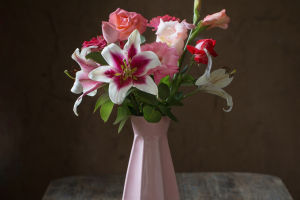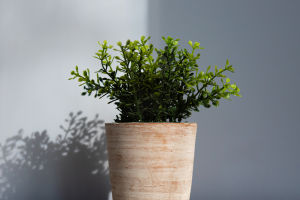Flowers are one of nature’s most beautiful and complex creations. They are the organs of plant reproduction and carry important cultural, symbolic, and ecological roles.
While we often admire the outer beauty of flowers, we rarely understand the deeper mystery behind their diversity. The world of flowers is far more intricate than it appears on the surface.
From a biological standpoint, the shape and color of flowers are not just for aesthetics, but to adapt to different pollinators. Various flowers develop characteristics based on their primary pollinators—insects, birds, wind, or water. For instance, bees are drawn to blue and purple flowers, while butterflies prefer red and yellow ones.
Flowers that bloom at night, such as the night-blooming cereus, usually have strong fragrances since they depend on nocturnal animals, like bats or moths, for pollination. This diverse pollination system ensures plant reproduction and helps maintain biodiversity.
Beyond aiding in reproduction, flowers show incredible adaptability. Some flowers have evolved special self-protection mechanisms to avoid being eaten by herbivores.
For example, some flowers release bitter chemicals to make themselves less palatable, while others use camouflage, imitating leaves to blend in and escape predators.
In extreme environments like deserts, cactus flowers bloom quickly during short periods of rainfall to adapt to the arid conditions. These survival strategies highlight the remarkable ability of flowers to adjust to their environment.
Flowers also carry deep cultural significance. In ancient times, they were imbued with symbolic meanings. For example, in ancient Egypt, the lotus was seen as a symbol of regeneration and eternal life because it reopened each morning.
In China, the plum blossom symbolizes resilience and strength as it blooms in the cold winter. In 19th-century Europe, the language of flowers became a popular trend, with people using specific flowers to express unspoken emotions.
Red roses symbolized love, white lilies represented purity, and chrysanthemums associated death and mourning. These interpretations reflect how different cultures perceive nature and life.
Modern scientific research shows that the color and fragrance of flowers not only attract pollinators but also affect human emotions and psychology. Studies have found that flowers can help reduce stress and enhance feelings of happiness.
Different colors of flowers can trigger various emotional responses: yellow flowers bring joy, while red flowers evoke passion and energy. Flower scents also have calming and soothing effects. Lavender and jasmine, for instance, are often used in aromatherapy to help people relax and ease anxiety.
Flowers not only influence us emotionally and spiritually but also play a vital role in medicine. Many medicinal plants use flowers in traditional remedies. For instance, chamomile tea is commonly used to treat insomnia and indigestion due to its anti-inflammatory and calming properties.
In traditional Chinese medicine, honeysuckle is used to reduce heat and detoxify the body. Modern pharmacology has discovered that many flowers contain antibacterial, antiviral, and antioxidant compounds, providing valuable foundations for medical research.
The timing and rhythm of flower blooming are also influenced by environmental factors like light, temperature, and seasons. While sunflowers are famous for following the sun, many other flowers also have "biological clocks." This process is known as the "circadian rhythm," where plants adjust their growth and flowering based on day and night cycles.
For example, dandelions open when the morning sun shines and close at night to protect their blooms from insects. These circadian rhythms influence the timing of flowering and the plant's overall growth and nutrient intake.
Interestingly, flowers can even interact with sounds. Although plants don’t have ears, research has shown that some flowers respond to certain sounds.
A study found that flowers can temporarily increase the sugar content in their nectar when they sense the sound of bees’ wings, making them more attractive to pollinators. This shows that flowers may not rely solely on sight and smell but also use sound to optimize their pollination strategies.
The allure of flowers lies not only in their beauty and complexity but also in their intricate connection to ecosystems and human culture.
From maintaining ecological balance to fostering emotional communication, from traditional medicine to modern scientific research, flowers influence the world with their diversity and unique traits.
They are not merely natural decorations but symbols and carriers of life itself. Each flower holds a wealth of scientific knowledge and cultural heritage waiting to be explored and appreciated.


